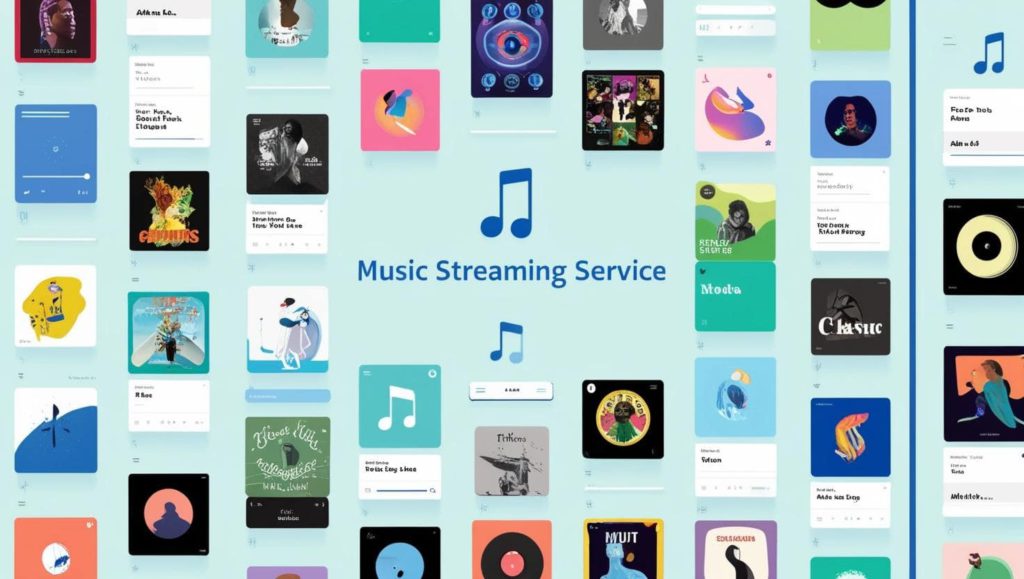The way we listen to music has undergone a radical transformation over the past decade, largely due to the rise of streaming platforms.

Services like Spotify, Apple Music, YouTube, and Tidal have reshaped the music industry. Revolutionising not just how we access songs, but also how we discover, consume, and engage with music. But what exactly has changed? How does it affect both listeners and artists?
1. Music at your fingertips: Instant access to millions of tracks
Gone are the days of buying CDs, vinyl, or even downloading songs individually. With streaming platforms, listeners can instantly access millions of songs from any artist, anytime, anywhere.
Whether you’re commuting, working out, or relaxing at home, your entire music library is just a tap away. This has significantly enhanced convenience and accessibility. People no longer need to own physical copies of music to enjoy their favourite tracks.
This shift has allowed genres and artists from all over the world to be heard by anyone with an internet connection. Music is no longer confined to borders. Meaning, listeners have a vast array of styles and cultures at their fingertips.
2. From albums to playlists: The rise of curated content
One of the most noticeable changes brought about by streaming platforms is the shift from albums to playlists. In the past, albums were the primary way artists delivered their music, and listeners would often consume an album in its entirety.
Today, playlists—whether curated by users, platforms, or algorithmic systems—have become the main way people experience music. Streaming platforms use algorithms to create personalised playlists like Spotify’s “Discover Weekly” or Apple Music’s “For You,” offering users a constant stream of new music tailored to their tastes.
Playlists allow for a more fluid and fragmented listening experience. Where individual tracks are consumed in various orders, rather than being experienced as part of an album. For artists, this means that songs have to be engaging and compelling on their own, as listeners are less likely to commit to an entire album unless they are already invested in the artist’s work.
3. Music discovery: Algorithms and personalised recommendations
One of the most powerful features of streaming platforms is their ability to recommend music based on your listening history. Services like Spotify, Apple Music, and YouTube leverage sophisticated algorithms to suggest tracks, albums, and artists that align with your preferences.
These recommendations help listeners discover new music they might never have encountered otherwise. Whether it’s based on genre, mood, or previous plays, algorithms make it easier to uncover fresh sounds and hidden gems.
This personalised experience also means that smaller, independent artists can find new audiences. Bypassing the traditional gatekeepers like record labels and radio stations. It makes the process easier for the listener and artist.
However, this algorithm-driven discovery system has also raised concerns about the homogenisation of music. Some critics argue that it favours certain types of music over others and limits diversity in musical exploration.
4. The playlist economy: How curators influence music trends
The growing dominance of playlists has given rise to a new group of tastemakers: curators. Playlists—especially those created by streaming platforms or influential users—have become essential tools for promoting music. Getting featured on a popular playlist can provide a massive boost to an artist’s streams and visibility.
Curators, from Spotify’s editorial team to independent playlist creators, now hold significant power in determining which songs become hits. Artists and record labels are keenly aware of this and often strategise their releases to align with popular playlists in order to maximise exposure.
This has changed how music is promoted and consumed. Instead of relying solely on traditional promotional methods like radio play or TV appearances, artists now have to focus on getting their tracks onto key playlists to gain traction.
5. The decline of physical media and ownership
Streaming has also contributed to the decline of physical media. For years, CDs and vinyl records were the main ways people bought music, with vinyl even experiencing a resurgence in recent years. However, as streaming platforms offer an all-you-can-listen-to service for a low monthly fee, the desire to own physical copies of music has diminished for many consumers.
This shift has had a significant impact on the music industry. While it has made music more accessible and affordable for listeners, it has also reduced the revenue artists make from album sales. Many artists now rely on live performances, merchandise, and other revenue streams to supplement income from streaming royalties.
6. Music as a service: Subscription models and the streaming economy
Streaming platforms have also introduced a subscription-based model that fundamentally changes how we pay for music. With services like Spotify Premium or Apple Music, users pay a monthly fee for ad-free listening, offline access, and other perks. This model allows listeners to access a vast catalogue of music without purchasing individual tracks or albums.
While the subscription model offers affordability and convenience for consumers, it has sparked debate about how artists are compensated. Streaming royalties are often small, especially for independent or emerging artists. As a result, many musicians are voicing concerns about the sustainability of this model for their careers.
Despite these challenges, the subscription model has provided artists with a consistent avenue for reaching audiences, and streaming services are increasingly investing in artist-centric features, such as fan engagement tools and concert promotion.
7. The shift in how we engage with music
Streaming platforms have changed how we engage with music on a deeper level. Listeners no longer simply consume music passively; they interact with it in a more personal way. They create custom playlists, share their favourite tracks on social media, and explore their music tastes through platform features like “likes” and “shares.”
For artists, this shift means that music is not only a product to be consumed, but also a conversation to be had. Engagement is key. Whether it’s through social media, live-streaming, or directly communicating with fans. The ability to interact and build a relationship with listeners is now more important than ever.
Streaming platforms have dramatically reshaped the way we listen to music. Offering instant access, personalised recommendations, and an entirely new way to discover and share music. While this has created new opportunities for listeners and artists alike, it has also posed challenges, particularly for how musicians are compensated.
The shift from albums to playlists, the impact of algorithms on music discovery, and the move toward subscription models are all part of a broader evolution in the music industry. As technology continues to evolve, the way we engage with music will likely continue to change—both for listeners and the artists creating the sounds that define our culture.



